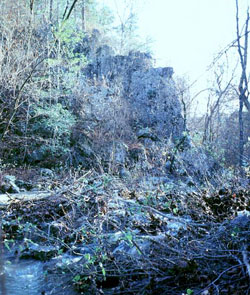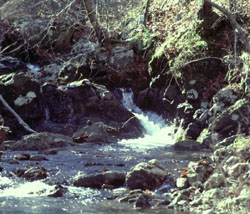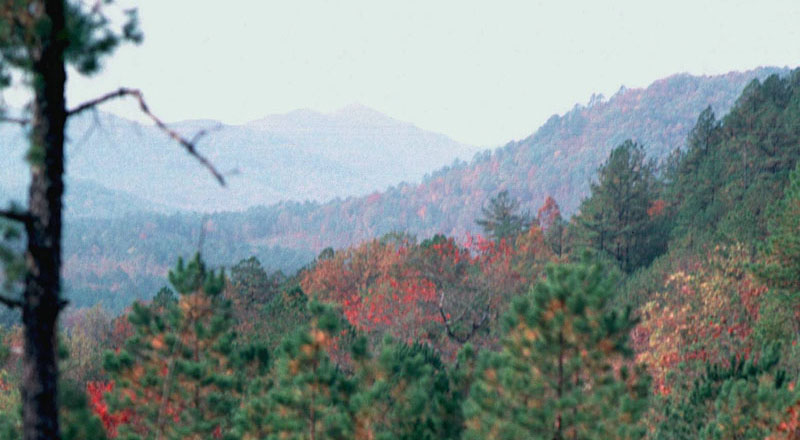
Novaculite outrcrop along stream in the Ouachita
Mountains of southwestern Arkansas. Photo by Bill Martin.

Spring-fed stream flows through novaculite outcrop.
The streams and rivers in the Ouachita Mountains typically flow fast
and clear. Photo by Bill Martin.
|
Certain of the Ouachita rocks were prized by the Caddo
and earlier peoples. Novaculite occurs in many color variations and
was quarried by prehistoric peoples beginning at least as early as the
Middle Archaic period, about 5,000 years ago. Novaculite was fashioned
by Caddo flintknappers into a variety of tools including knives and
projectile points. The Caddo also sought out crystal quartz from the
wide belt of quartz-bearing veins 30-40 miles wide that, like most everything
else, runs east-west across the Ouachitas. Quartz was sometimes flaked
(chipped), but whole crystals have been found in ceremonial contexts,
suggesting that they also had symbolic value. Various other rocks found
in the Ouachitas, such as sandstone, shale, and slate, were used by
the Caddo for grinding tools, celts (axes), and ritual objects, some
of which were traded widely in the Mississippian world.
The Oauchita Mountains are heavily forested with oak and
hickory predominating to the north and east, giving way to oak and pine
to the south. Within the mountains and valleys are many smaller ecological
niches that support a diverse array of plants and animals, many of which
were used by the Caddo. For Caddo farmers the Ouachita Mountains presented
a challenging environment. Narrow stream and river valleys provided
only limited floodplain areas suitable for farming and, because of the
higher elevations, growing seasons were shorter compared to the rest
of the Caddo Homeland to the south and west. The Ouachita River valley
runs through the central Ouachita Mountains and provides relatively
wide floodplains; not surprisingly, the valley was favored by the ancient
Caddo for farming and settlement.
|

